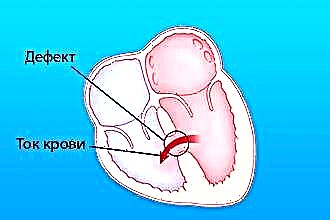When a runny nose bothers, life truly loses its bright colors. A stuffy nose does not allow you to breathe deeply, instead becoming the cause of obsessive headaches and dizziness. It is much more difficult for a person with a runny nose to perform even the usual daily tasks. Often, congestion is combined with a feeling of general weakness, an increase in body temperature. A runny nose is a consequence of pathological changes in one anatomical region, but the whole body suffers. Some patients benefit from aerosol therapy for nasal congestion. For the treatment to be effective, it is worth knowing when and with what you can do inhalation with a nebulizer for a cold.
Classification, principle of action of funds
 A nebulizer is a device with which aerosol therapy is carried out - in particular, for a cold. Preparations for inhalation with a nebulizer are initially in a liquid state, but after being inserted into the container, the devices are converted into an aerosol. The size of the particles that make up it can vary - this property characterizes the dispersion of the aerosol and is used to affect various parts of the respiratory tract. Will nebulizer medications really work for a cold?
A nebulizer is a device with which aerosol therapy is carried out - in particular, for a cold. Preparations for inhalation with a nebulizer are initially in a liquid state, but after being inserted into the container, the devices are converted into an aerosol. The size of the particles that make up it can vary - this property characterizes the dispersion of the aerosol and is used to affect various parts of the respiratory tract. Will nebulizer medications really work for a cold?
In case of a runny nose, when choosing what to breathe through a nebulizer, it is necessary to take into account what kind of disease the patient has encountered. For aerosol therapy, the following means can be used:
- thinning;
- anti-inflammatory;
- immunomodulatory;
- antibacterial
The finer the aerosol particles, the deeper they penetrate into the respiratory tract.
In order for a solution for a nebulizer for a cold to work, it must include only large components. The aerosol is sprayed into the respiratory tract - the particles move at a certain speed. Finely dispersed components do not have time to settle in the upper sections and, hanging in the air stream, penetrate into the underlying areas (bronchi, lungs). However, the distribution of coarse aerosol occurs in a different way. Solutions for a nebulizer with a runny nose, under the influence of gravity, almost immediately begin to descend and remain on the walls of the upper respiratory tract. Thus, a nebulizer inhaler will help with a runny nose if you use devices that can create aerosols with large particles.
Thinning agents
Nebulizer solutions that relieve the common cold have the ability to dilute nasal secretions. This is one of the most popular groups of drugs that are used in aerosol therapy for upper respiratory tract pathologies. The list can be presented in the table:
| Group of drugs | Examples of drugs | Action | Application features | Precautionary measures |
| Mucolytics | Lazolvan, Ambroxol, Ambrobene in the form of a solution for inhalation in vials. Acetylcysteine, Mukomist, Fluimucil in ampoules. | The listed medicines for inhalation with a nebulizer for a cold help to make the nasal secretion less viscous, which makes it easier to separate. | Preparations for a nebulizer are used for a cold in pure form or diluted by adding physiological solution (most often the ratio is 1: 1) in glassware. In no case should the medicine be diluted with distilled water. | Treatment requires caution if the patient has bronchial asthma due to the risk of increased bronchospasm. |
| Saline solutions | Physiological solution (0.9% sodium chloride solution), hypertonic solution (3% sodium chloride solution). | Moisturizing and cleansing the mucous membrane is what saline solutions are designed for. Treatment of a cold with a nebulizer prevents the formation of crusts, simplifies the release of nasal secretions. | Inhalation with a cold with a nebulizer with saline solution does not require dilution with additional means. | Treatment requires caution if the patient has bronchial asthma due to the risk of increased bronchospasm. |
| Alkaline solutions | Sodium bicarbonate. | It loosens mucus and creates an alkaline environment at the site of inflammation. | Usually a 2% solution is used. | Do not use with a large amount of serous discharge. |
| Combined funds | Fluimucil-antibiotic IT (contains acetylcysteine and Tiamphenicol). | Possesses antibacterial activity, improves the separation of thick and viscous nasal secretions. | It is used in a diluted form, for which a saline solution is used. | Contraindicated in bronchial asthma. |
Prepare a solution for a nebulizer with a runny nose immediately before use.
If the vial contains a large volume of medication, it should be stored in accordance with the rules specified in the instructions. The contents of the opened ampoules must be used immediately. Solution for inhalation with a nebulizer for a runny nose, remaining after the procedure, must not be reused. The type of drug, dosage and frequency of inhalations should be selected by the doctor after an internal examination.
Anti-inflammatory drugs
A significant advantage of aerosol therapy is the locality of application. Since topical, that is, drugs intended for a specific area, are used, the likelihood of side effects is reduced. Medicines for the common cold for a nebulizer are delivered directly to the site of inflammation, are quickly absorbed in a sufficient volume (with the correct dosage). They help to improve mucociliary clearance (activity of cilia of the ciliated epithelium, viscosity of nasal secretions), moisturize the nasal mucosa.
Anti-inflammatory drugs, which can be included in the aerosol therapy for rhinitis, are indicated only for severe allergic rhinitis, as well as if the patient has bronchial asthma. They are represented by topical glucocorticosteroids, or GCS (Budesonide, Pulmicort). The duration of treatment, as a rule, does not exceed 5-7 days. If the doctor has prescribed inhalation of these drugs for a cold with a nebulizer, prescriptions for solutions usually include saline - it is used for dilution.
How to properly prepare drugs for use? Prescriptions for inhaling nasal medication with a nebulizer may look like this:
- Use undiluted product (if the volume of the contents of the container exceeds 2 ml).
- Add saline solution at a lower volume to make a total of 2 ml or more.
Ready-made GCS solutions for inhalation with a nebulizer with a cold differ in the dosage of the active substance.
The need for dilution, the ratio of the drug and saline solution is determined by the doctor. Sometimes inhalation is prescribed without the addition of saline. Glucocorticosteroids cannot be used without clear indications. They are not suitable for the treatment of viral and bacterial rhinitis and sinusitis.
Antibiotics, immunomodulators
 Antibacterial solutions for inhalers-nebulizers for a cold are used infrequently, since most rhinitis is the result of an uncomplicated form of ARVI (acute respiratory viral infection). The course of such a rhinitis can be alleviated by inhalation of saline solutions. The indication for the use of antibiotics is chronic bacterial rhinitis or sinusitis, especially when combined with allergic rhinitis.
Antibacterial solutions for inhalers-nebulizers for a cold are used infrequently, since most rhinitis is the result of an uncomplicated form of ARVI (acute respiratory viral infection). The course of such a rhinitis can be alleviated by inhalation of saline solutions. The indication for the use of antibiotics is chronic bacterial rhinitis or sinusitis, especially when combined with allergic rhinitis.
What to put in a nebulizer for a cold? To determine what to carry out inhalations for the nose with a nebulizer, what medicine to use, the spectrum of antibacterial action should be assessed. One of the most affordable and effective drugs is Furacilin. It is active against a large number of pathogenic microorganisms. Also used is Fluimucil-antibiotic IT, previously mentioned in the "Diluents" section.
What are the components of inhalation of an antimicrobial drug for a cold with a nebulizer? Prescriptions must be determined by the attending physician. The classic version uses:
- Furacilin at a dilution of 1: 5000 in a volume of 2 to 5 ml 2 times a day;
- Fluimucil is an antibiotic IT at a dosage of 125 to 250 mg.
When preparing a solution for an aerosol, you must not mix different drugs.
The only acceptable addition to the medicine is a diluent (saline, etc.).
If immunomodulators are required for a runny nose, what is inhalations done with a nebulizer? Interferon preparations (Leukinferon) are used, as well as Derinat. An indication for treatment with Leinferon can be viral rhinitis if the patient has allergic rhinitis. Derinat, as a biologically active substance that has not only immunomodulatory, but also anti-inflammatory effects, is used in the treatment of allergic, viral and bacterial rhinitis, chronic rhinosinusitis.
What to add to the nebulizer if Leukinferon or Derinat is prescribed for a cold? In the first case, 5 ml of distilled water is needed for 1 ml of the drug. For Derinat, the standard dilution is 1: 1 with saline, and the standard volume is 2 to 4 ml in total for 1 procedure.
To obtain a successful result from aerosol therapy, it is necessary to correctly select the type of drug, its dosage and frequency of application. Before starting treatment, you should consult your doctor. The device is not always suitable for use if the patient is a small child. In this case, special care is required and in no case should you prescribe a therapy regimen on your own, before a specialist is examined.



